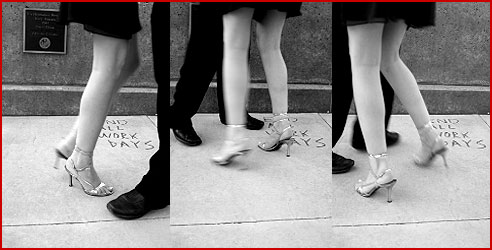Mobile Monuments
Haymarket Memorial

On May 3, 1886 in the Chicago Haymarket a tragedy took place that has had significant impact on the international labor movement even up to the present day. On that night a labor demonstration turned violent when 176 Chicago police moved to disperse the peaceful crowd. An unknown party threw a bomb. Suspects of the bombing have included labor leaders and anarchists, as well as the Pinkerton Police - who often worked for industrial interests to disrupt labor-organizing efforts. Although the bomber was never identified, a kangaroo court convicted 8 labor organizers. Four were hanged, 3 received life sentences and one committed suicide while in jail awaiting trial. This trial is generally considered one of the greatest desecrations of justice in American history. In 1893 Illinois governor John Peter Atgeld (at great personal political cost) granted a full pardon the convicted organizers.
In the years immediately after the tragedy two monuments were erected. Each of these monuments represented dialectically opposed political views of the nature of the tragedy. One in German Waldheim Cemetery was a commemoration for those organizers who lost their lives. The other monument, erected by a very different constituency, was a life-size bronze statue of a police officer that was placed in Haymarket Square. This monument, seen by Labor as a symbol of unfair police and justice systems, has been the object of repeated acts of resistance. It has been vandalized innumerable times, bombed several times, and even struck by streetcars (quite probably intentionally) As a consequence of this it has been moved repeatedly to very distant sights. Beginning in 1970 it was even placed under 24-hour armed police guard for two years. As a last resort the stature was moved to a publically inaccessible location in Chicago Police headquarters. To view this "public memorial" one must submit a written request in advance to the Superintendent of Chicago Police.
Meanwhile at the original site of the sculpture a number of alternative memorials have been tried over the years, ranging from nothing at all to simple bronze plaques placed in the sidewalk. With each version of this memorial tribute the language of memorialization has shifted in response to political constituencies. Finally in 2004 Mayor Daley and Labor leaders dedicated the still standing sculpture by Mary Brogger as the central element of a proposed labor park honoring both the victims of this historic event and the principles of free speech. Since that time there has been no progress made on the rest of "Labor Park". Considering the historical significance of this site and the extensive scale and scope of the Chicago Park District, it is not difficult to see the lack of progress on "Labor Park" as a passive(-aggressive) political statement on the part of the city.
For more information on the history of Haymarket and its aftermath please refer to following external sites:
